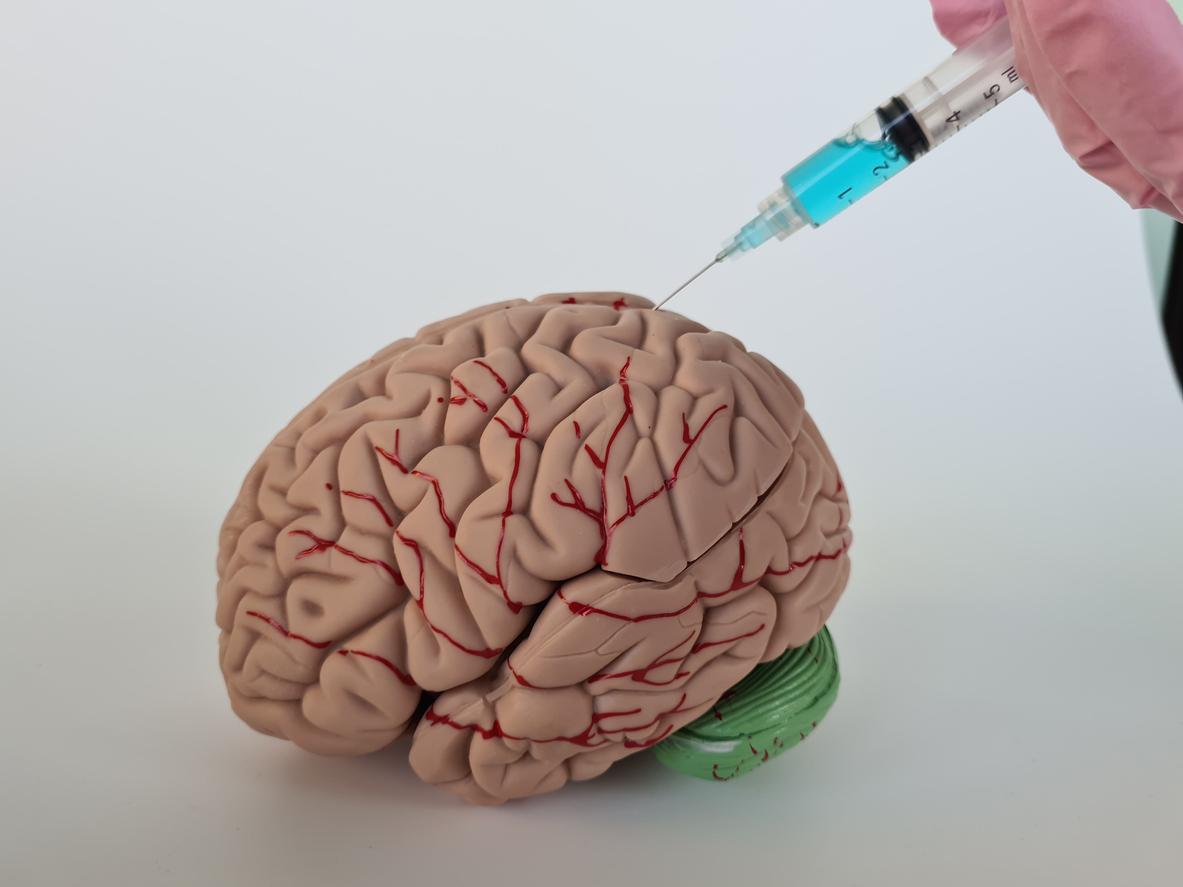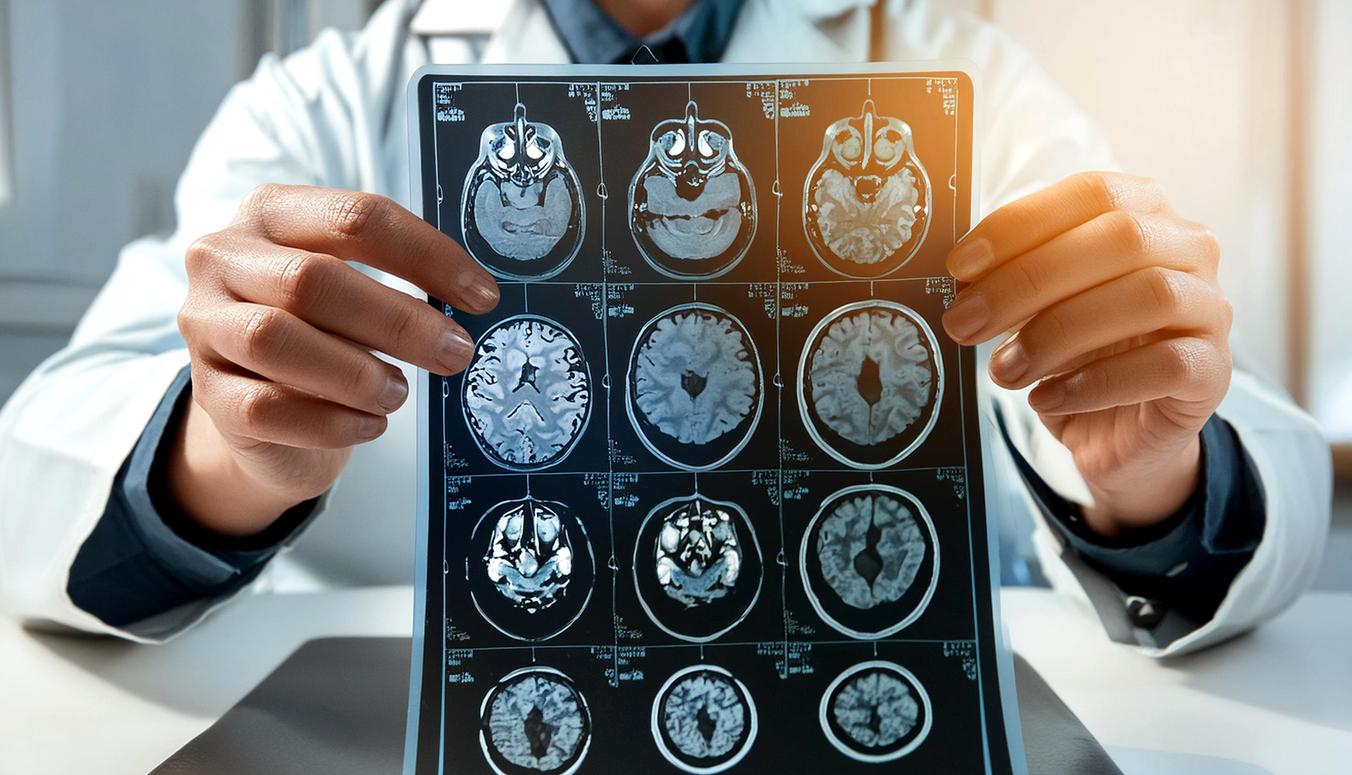- What are the different types of thyroid cancer?
- Thyroid cancer: what are the symptoms?
- What are the causes of thyroid cancer?
- Thyroid cancer: how is the diagnosis made?
- Thyroid cancer: what are the treatments?
- Is thyroid cancer curable?
- Thyroid cancer: why do we talk about overdiagnosis?
Thyroid cancer is a cancer that develops at the expense of the thyroid gland, located in the middle part of the neck. She has a butterfly shape: “Each wing represents a lobe and the central part is called the isthmus“, says Dr. Christelle de la Fouchardière, medical oncologist at the Léon Bérard center in Lyon.
First, there is a alteration in the genetic material of a cell (DNA) which leads to a transformation of this cell, then the development of many cells which will then multiply abnormally in this gland to form a tumor.
What are the different types of thyroid cancer?
It exists different types of thyroid cancerbut some in particular are more widespread:
- THE papillary or follicular cancers, which come from follicular cells, responsible for the production of thyroid hormones: triiodothyronine (T3) and thyroxine (T4). These are the most frequent cancers: they represent more than 80% of thyroid cancers and are generally treated very well;
- THE anaplastic cancers : these are much more aggressive cancers. They also develop at the expense of follicular cells but are very undifferentiated. They also have a faster extension than the others and develop especially in the elderly;
- THE medullary cancers : in 8 to 9% of cases, thyroid cancer develops from cells called “C (or para-follicular) cells”. It is a cancer that is less well treated.
Thyroid cancer: what are the symptoms?
“Most often, thyroid cancer is manifested by the presence of a nodule in the necksays Dr. de la Fouchardière. But they are more and more often discovered by chance, in particular during ultrasounds for another problem (carotid artery, etc.) or during a palpation of the neck carried out on a regular and preventive basis at the doctor’s office..”
In the case of more serious cancers, patients may present with larger mass in the neck responsible for respiratory symptoms, difficulty eating or swallowing or pain in the neck. In the case of metastatic forms, symptoms may affect the bones or the lungs.
“Thyroid cancer does not manifest itself in most cases by disturbances in the thyroid balance, which will not show any signs of cancer“, warns the oncologist. The disease does not lead usually no hormonal disturbances.
What are the causes of thyroid cancer?
Thyroid cancer is a adult cancer, mainly present in women around 50-55 years old. It is very rare in children, apart from the contexts of irradiation after Hiroshima or Chernobyl.
Indeed, exposure to radiation (radiotherapy, nuclear accidents or tests, proximity to radioactive waste) is one of the main known causes of thyroid cancer.
For some forms, such as medullary cancers, there are family forms. “In these cases, the patient received the mutated RET gene from his parents.“, warns Dr. de la Fouchardière.
Thyroid cancer: how is the diagnosis made?
“Once the palpation of the neck has been made and a nodule has been found, the reference examination is an ultrasound of the neck, in order to examine the nodulesays the specialist. Depending on certain criteria such as size, shape or even the appearance of the lump, we will define whether it is a suspicious nodule or not..”
After the ultrasound, the endocrinologist or radiologist will perform a fine needle puncture to remove the suspect nodule and to analyze the cells present on its surface. This small number of cells will then be analyzed under the microscope, in order to give a diagnosis of benign, intermediate or cancerous cytology.
Finally, a blood test will be necessary at the same time as the ultrasound, in particular to check what type of cancer it is (calcitonin assay). In the case of medullary cancer, the diagnosis is important: the surgery envisaged afterwards may be different, more complete.
Thyroid cancer: what are the treatments?
There surgery is the “corner stone” of the treatment, says Dr. de la Fouchardière. “It can be partial, i.e. only one lobe is removed, or only the affected area, or it can be total, i.e. all the thyroidshe says. It can sometimes be associated with lymph node dissection, i.e. removal of the neck lymph nodes“A partial or total intervention will depend on several criteria, including the size of the nodule, its local extension and whether it is accompanied by lymph nodes or not…
In the case of papillary or follicular cancers, we will sometimes administer radioactive iodine to the patient postoperatively, but not in all cases. “This prescription depends on the risk of recurrence, which will be assessed according to various parameters such as the type of cancer cells, the presence or absence of lymph nodes and other characteristics such as the patient’s age, for example.“, details the specialist. Nevertheless, in this type of cancer, the risk of recurrence is not very high.
Is thyroid cancer curable?
“In the case of papillary and follicular cancers, they are cured in more than 95% of casesthis is one of the highest success rates“, reassures Dr. de la Fouchardière.
Nevertheless, in the case of anaplastic and medullary cancers, even if they represent only a small part of thyroid cancers, their prognosis is more pejorative. “There is no cure for anaplastic cancerregrets the medical oncologist. Radioactive iodine is not even given after surgery because it is not effective. Life expectancy is less than 5% at five years.”
The same goes for medullary cancers, which are also less treatable. “They are treated by surgery, immediately with removal of the thyroid and associated lymph nodes“, explains Dr. Christelle de la Fouchardière. As with anaplastic cancers, patients are not administered radioactive iodine, as it is not effective against this type of cancer.
Thyroid cancer: why do we talk about overdiagnosis?
“We talk a lot about overdiagnosis, especially for very small thyroid cancers, papillary microcancers that measure less than one centimeter“, indicates the oncologist. Today, thanks to more efficient ultrasounds and advances in terms of imaging, these small cancers are much more detected.
Wrongly, according to the doctor. “We sometimes regret diagnosing such small cancers: all individuals can have small cancers that develop and heal spontaneously.she explains. When they are less than a centimeter, we can offer to watch it, and not to operate. The treatment is not compulsory, it can be worse than the disease and will sometimes ruin the life of patients for nothing.”
Our speaker:
- Dr. Christelle de la Fouchardière, medical oncologist at the Léon Bérard center in Lyon
Read also:
- Artificial light at night could increase the risk of thyroid cancer
- 5 tips for a healthy thyroid
- Nuclear power plants: many residents have not removed their iodine tablets
















